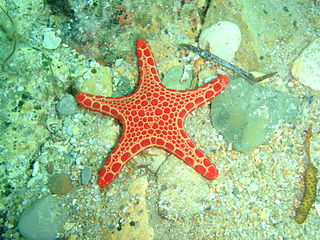Related Research Articles

The true finches are small to medium-sized passerine birds in the family Fringillidae. Finches generally have stout conical bills adapted for eating seeds and nuts and often have colourful plumage. They occupy a great range of habitats where they are usually resident and do not migrate. They have a worldwide native distribution except for Australia and the polar regions. The family Fringillidae contains more than two hundred species divided into fifty genera. It includes the canaries, siskins, redpolls, serins, grosbeaks and euphonias, as well as the morphologically divergent Hawaiian honeycreepers.

The Anatidae are the biological family of water birds that includes ducks, geese, and swans. The family has a cosmopolitan distribution, occurring on all the world's continents except Antarctica. These birds are adapted for swimming, floating on the water surface, and in some cases diving in at least shallow water. The family contains around 174 species in 43 genera.
This page features lists of species and organisms that have become extinct. The reasons for extinction range from natural occurrences, such as shifts in the Earth's ecosystem or natural disasters, to human influences on nature by the overuse of natural resources, hunting and destruction of natural habitats.

Nebrius is a genus of carpet sharks in the family Ginglymostomatidae.

The hooktooth shark, is a weasel shark of the family Hemigaleidae, the only extant member of the genus Chaenogaleus, but there is an extinct species, Chaenogaleus affinis. The hooktooth shark is found in the tropical Indo-West Pacific oceans between latitudes 30° N and 10° S, including the Persian Gulf, Pakistan, India, Sri Lanka, Singapore, Thailand, Viet Nam, China, Taiwan, and Java and Sulawesi in Indonesia, from the surface to a depth of 59 meters. It can reach a length of 1 meter. It is considered a vulnerable species.

Melolonthinae is a subfamily of the scarab beetles. It is a very diverse group; distributed over most of the world, it contains over 11,000 species in over 750 genera. Some authors include the scarab subfamilies Euchirinae and Pachypodinae as tribes in the Melolonthinae.

Geotrygon is a bird genus in the pigeon and dove family (Columbidae). Its members are called quail-doves, and all live in the Neotropics. The species of this genus have ranges from southern Mexico and Central America to the West Indies and South America. Quail-doves are ground-dwelling birds that live, nest, and feed in dense forests. They are remarkable for their purple to brown coloration with light-and-dark facial markings.

Goniasteridae constitute the largest family of sea stars, included in the order Valvatida. They are mostly deep-dwelling species, but the family also include several colorful shallow tropical species.

Coccodus is an extinct genus of extinct pycnodontid fish that lived during the lower Cenomanian. The various species had a pair of massive, curved spines emanating from the lower sides of the head, and one curved spine on the top of its head. Unlike most pycnodontids, Coccodus species had a comparatively long body, giving the living animals a superficial resemblance to a scaly chimaera.

Australosomus is an extinct genus of prehistoric ray-finned fish that lived during the Early Triassic epoch in what is now Greenland, Kenya, Tanzania, Madagascar, South Africa and Canada.
Stichopterus is an extinct genus of chondrostean ray-finned fish that lived during the Early Cretaceous epoch in Asia. It has been found in Russia and Mongolia.

Elonichthys is an extinct genus of prehistoric bony fish. The genus is represented by several species from Carboniferous and Permian of Europe, Greenland, South Africa, and North America.

Besania is an extinct genus of prehistoric bony fish that lived during the Anisian and Ladinian ages of the Middle Triassic epoch in what is now southern/southeastern Switzerland and northern Italy. Fossils were recovered from the Besano Formation of Monte San Giorgio area and the Prosanto Formation of canton Graubünden, Switzerland.
Igornella is an extinct genus of prehistoric bony fish that lived during the Gzhelian (Stephanian) to Asselian ages in what is now France (Burgundy).

Orthocormus is an extinct genus of prehistoric pachycormiform bony fish. It is known from three species found in Late Jurassic (Kimmeridgian) aged plattenkalk deposits in Bavaria, Germany. The species "Hypsocormus" tenuirostris Woodward 1889 from the late Middle Jurassic (Callovian) Oxford Clay is not closely related to the type species of Hypsocormus, and is more closely related to Orthocormus + Protosphyraena, and thus has sometimes been referred to in open nomenclature as Orthocormus? tenuirostris. The species of Orthocormus reached over a metre in length, and are thought to have been pelagic predators.

Phanerosteon is an extinct genus of prehistoric bony fish from the Carboniferous period. The type species, P. mirabile, was recovered from the Calciferous sandstone series (Pennsylvanian), Scotland. A second species, P. phonax was described from the Serpukhovian aged Bear Gulch Limestone lagerstätte in Montana, United States.
Pleuropholis is an extinct genus of prehistoric ray-finned fish.

Turonia is an extinct genus of sea sponges belonging to the class Demospongiae.
Calliderma may refer to:
The following are lists of prehistoric animals:
References
- ↑ J. E. Gray. 1847. Description of some new genera and species of Asteriadae. Proceedings of the Zoological Society of London 1847, pages 72-82